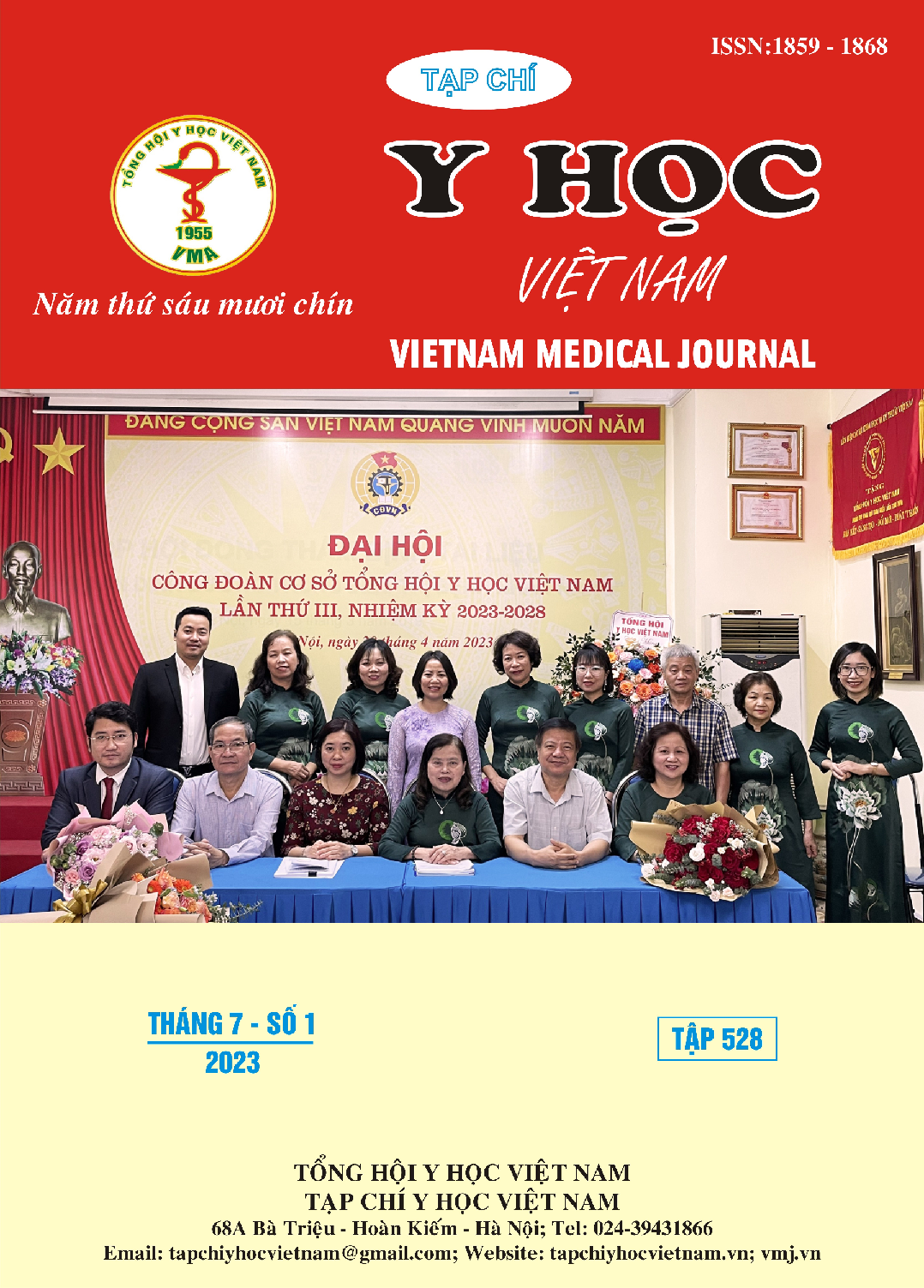TRADITIONAL MEDICINE CLINICAL CHARACTERISTICS OF SMOKERS IN WARD 5, DISTRICT 10, HO CHI MINH CITY
Main Article Content
Abstract
Objective: To describe the traditional medicine clinical characteristics of smokers in Ward 5, District 10, Ho Chi Minh City. Subjects and methods: A cross-sectional descriptive study from April 2022 to the end of October 2022 on 106 smokers aged 15 years and older living in Ward 5, District 10. Results: The age of smokers was mainly in the group 40 – 59 years old (46%), with the higher percentage of men (95% compared to 5%), most of them are self-employed and other occupations (55% and 12%), civil servants (11%), workers (10%), students (6%), unemployment (6%). Mostly time of smoking are 11-30 years (43%), followed by smoking group 31-50 years (33%), under 10 years (21%), over 50 years smokers (3%). Qi-deficiency constitution (22%), Phlegm-wetness (16%), Yin-deficiency (16%), Blood-stasis (14%), Inherited special constitution (12 Wetness-heat (10%), Qi-depressed (7%), Yang-deficiency (7%), Normality constitution was 7%. The most common clinical symptoms are fatigue, shortness of breath, poor appetite (55%), followed by dry thirst, dry eyes, dry skin (44%); cough, sputum stuck in the throat (52%). Conclusion: Smokers are usually male, 40-59 years old, average BMI, most are self-employed, smoking time is 11-30 years, comorbidities are usually hypertension, dyslipidemia. blood, coronary heart disease. Traditional Chinese Medicine Constitution are mainly Qi-deficiency, Phlegm-wetness, Yin-deficiency, Blood-stasis. The most common symptoms are fatigue, shortness of breath, poor appetite, followed by dry thirst, cough with sputum in the throat
Article Details
Keywords
Clinical features, Traditional Chinese Medicine Constitution, smoking.
References
2. Trần Thái Hà (2022) “Đặc điểm lâm sàng và thể tạng theo y học cổ truyền của người nghiện thuốc lá tại thành phố Hà Nội”, Tạp chí Y học Việt Nam tập 513, 4(1), tr 55-58.
3. Nguyễn Thị Sơn (2021),“Khảo sát tỉ lệ các thể lâm sàng Y học cổ truyền trên bệnh tăng huyết áp bằng bảng CCMQ”, Tạp chí Y Học TP. Hồ Chí Minh. 25(5), tr. 51-57.
4. Qian Bai và các cộng sự (2021), “The Correlation between Demographical and Lifestyle Factors and Traditional Chinese Medicine Constitution among Macau Elderly Individuals”, Evidence-Based Complementary and Alternative Medicine. 2021, tr. 1-9.
5. Lin Xiaomei YE Ling (2018), "Study on the Correlation betw een Traditional Chinese Medicine Constitution and Obesity, Blood Coagulation, Blood Lipids and Smoking Index in Patients w ith COPD", Chinese Medicine Modern Distance Education Of China. 16 (24), tr. 48-50.
6. Yanbo Zhu và các cộng sự (2014), “Case-control study on the associations between lifestyle-behavioral risk factors and phlegm-wetness constitution”, Journal of Traditional Chinese Medicine. 34(3), tr. 286-292.
7. Yanbo Zhu và các cộng sự (2017). “Association between Nine Types of TCM Constitution and Five Chronic Diseases: A Correspondence Analysis Based on a Sample of 2,660 Participants”, Evidence-Based Complementary and Alternative Medicine. 2017, tr. 1-7.


